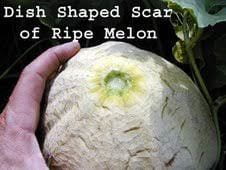This time of year, gardens often have an excess of fresh produce. Don’t let it go to waste! We put together a quick video explaining tomato growing tips and then demonstrating a yummy fresh salsa recipe.
Watch the video here.
By: Cassie Homan
This time of year, gardens often have an excess of fresh produce. Don’t let it go to waste! We put together a quick video explaining tomato growing tips and then demonstrating a yummy fresh salsa recipe.
Watch the video here.
By: Cassie Homan

Please join us for the upcoming K-State Garden Hours. We have great topics planned to close out the year!
September 1– Basics of Growing Berries in Kansas
September 15– Composting with Worms- Vermicomposting 101
These webinars are free to attend but registration is required. Register here: https://hnr.k-state.edu/extension/info-center/k-state-garden-hour-webinar-series/k_state_garden_hour.html
By: Cassie Homan
The hot weather we have had recently can interfere with how quickly our vegetables and fruits mature. The best temperature for tomato growth and fruit development is 85 to 90F. When temperatures exceed 100 degrees, the plant goes into survival mode and concentrates on moving water. Fruit development slows to a crawl. When temperatures moderate, even to the low to mid 90s, the fruit will ripen more quickly.

Tomato color can also be affected by heat. When temperatures rise above 95 degrees F, red pigments don’t form properly though the orange and yellow pigments do. This results in orange fruit. This doesn’t affect the edibility of the tomato, but often gardeners want that deep red color back.
So, can we do anything to help our tomatoes ripen and have good color during extreme heat? Sure, there is. We can pick tomatoes in the “breaker” stage. Breaker stage tomatoes are those that have started to turn color. At this point, the tomato has cut itself off from the vine and nothing will be gained by keeping it on the plant. If tomatoes are picked at this stage and brought into an air-conditioned house, they will ripen more quickly and develop a good, red color. A temperature of 75 to 85 degrees F will work well.
By: Cassie Homan
Telling when a melon is ready to be harvested can be a challenge, or it may be quite easy. It all depends on the type of melon.
Let’s start with the easy one. Muskmelons are one of those crops that tell you when they are ready to be picked. This can help you not only harvest melons at the correct time but also choose good melons when shopping.
are ready to be picked. This can help you not only harvest melons at the correct time but also choose good melons when shopping.
As a melon ripens, a layer of cells around the stem softens so the melon detaches easily from the vine. This is called “slipping” and will leave a dish shaped scar at the point of stem attachment. When harvesting melons, put a little pressure where the vine attaches to the fruit. If ripe, it will release or “slip.”
When choosing a melon from those that have already been harvested, look for a clean, dish shaped scar. Also, ripe melons have a pleasant, musky aroma if the melons are at room temperature (not refrigerated).
Watermelons can be more difficult and growers often use several techniques to tell when to harvest.
By: Cassie Homan
Did you plant onions this year? We are getting close to harvest time. This video shows you how to best harvest and store onions.
By: Cassie Homan
Everyone loves to grow tomatoes but unfortunately, they can be prone to disease. If your tomatoes have ever looked brown and splotchy you might have a leaf spot disease. The link below will help guide you when diagnosing and preventing tomato disease.
http://www.ksuhortnewsletter.org/newsletters/tomato-leaf-spot-diseases4919005
By: Cassie Homan
 June is a busy time in the garden and landscape. There are many activities that need to be completed before the hot weather arrives. K-State Extension has created a helpful checklist to help you with your gardening tasks. Learn more here: https://www.postrock.k-state.edu/lawn-garden/gardening_calendar/JuneGardenCalendar.pdf
June is a busy time in the garden and landscape. There are many activities that need to be completed before the hot weather arrives. K-State Extension has created a helpful checklist to help you with your gardening tasks. Learn more here: https://www.postrock.k-state.edu/lawn-garden/gardening_calendar/JuneGardenCalendar.pdf
By: Cassie Homan